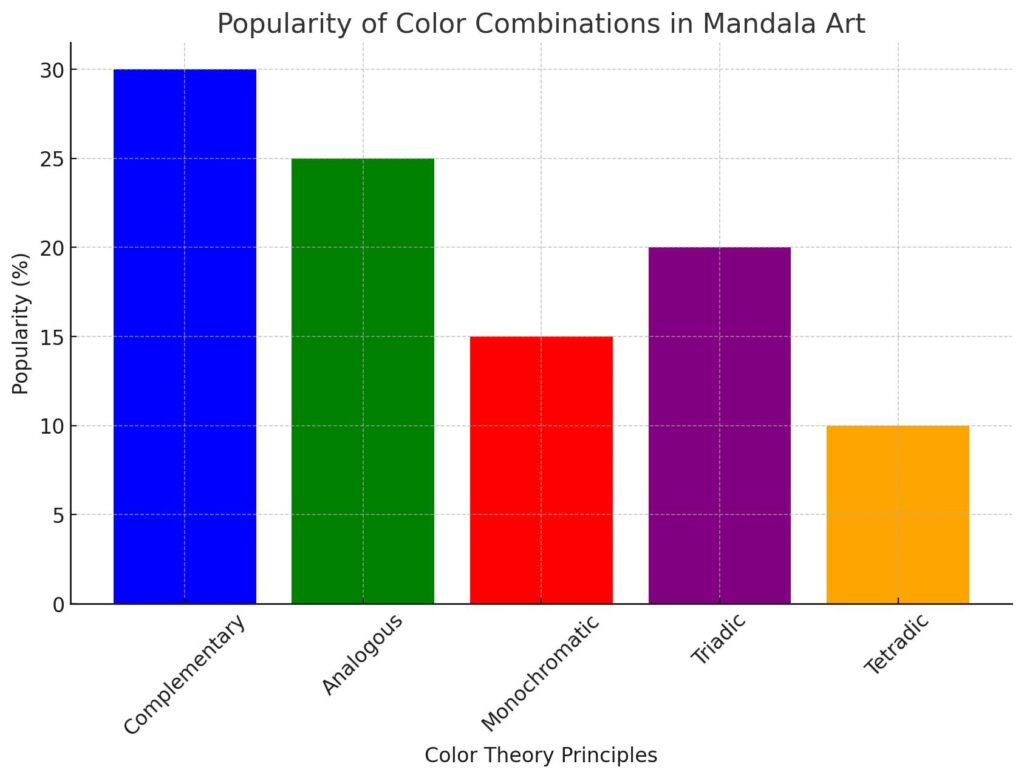Mandala Coloring Techniques: Enhancing Your Artistic Journey. Mandalas have captivated the hearts of artists and enthusiasts alike with their intricate designs and symmetrical beauty. Originating as a spiritual symbol in Hinduism and Buddhism, mandalas represent the universe and its infinite nature. Today, they have evolved into a popular form of art therapy, known for their ability to encourage relaxation and mindfulness.
The History and Symbolism of Mandalas
Mandala art holds profound cultural significance. These intricate designs are more than just beautiful patterns; they are a symbolic representation of the universe, life, and spiritual journey. Understanding their history enhances the coloring experience, connecting you to a centuries-old tradition of meditation and art.
Mandala Coloring for Beginners
If you’re just embarking on your mandala coloring journey, it’s essential to start with the basics. Our guide, Beginner’s Guide to Mandala Coloring, is an excellent resource for those new to this art form. Here, we introduce fundamental techniques and tips to get you started, ensuring a satisfying and enjoyable coloring experience.
Advanced Techniques for Experienced Artists
For those who have mastered the basics, exploring advanced mandala coloring techniques can be a thrilling next step. These techniques involve intricate shading, blending, and patterning, allowing for a more dynamic and vibrant creation. Experimenting with color theory, playing with light and shadow, and trying different color combinations can bring your mandalas to life.
Selecting the Right Tools and Materials
The choice of tools and materials can significantly impact the quality and appearance of your mandala art. From high-quality colored pencils to fine-tip markers and watercolors, each medium offers a unique texture and finish. The paper you choose is equally important, as it needs to support the medium without smudging or bleeding.
Mindfulness and Therapeutic Benefits
Mandala coloring is not just an artistic endeavor; it’s a form of meditation. The act of coloring intricate patterns requires focus and concentration, leading to a state of mindfulness. This can be incredibly therapeutic, reducing stress and anxiety, and promoting a sense of well-being.
Inspirational Ideas for Mandala Coloring
Unlocking creativity in mandala coloring is not just about technique; it’s also about inspiration. Experimenting with different themes, such as nature-inspired mandalas or abstract designs, can elevate your art. Incorporating personal symbols or motifs that hold special meaning to you can make each mandala uniquely yours.
Nature-Inspired Mandalas
Drawing inspiration from nature can infuse your mandalas with a sense of organic beauty. Think about incorporating elements like flowers, leaves, or celestial patterns. These natural motifs not only add a unique touch to your designs but also connect you with the natural world during the coloring process.
Abstract and Geometric Designs
Abstract and geometric designs offer a modern twist to traditional mandala art. These designs can range from simple geometric shapes to complex, abstract patterns. They challenge you to think outside the box and experiment with form and color in new and exciting ways.
Color Theory in Mandala Art
Understanding color theory can transform the way you approach mandala coloring. The use of complementary colors, warm and cool tones, and color gradients can create stunning visual effects. Experimenting with color can also reflect your mood and emotions, adding a personal touch to your artwork.

Tips for Creating Balanced and Harmonious Designs
Creating a balanced and harmonious mandala involves mindful placement of colors and patterns. Symmetry is a key element in mandala art, and maintaining it requires a steady hand and a keen eye for detail. Here are some tips to help you achieve balance in your designs:
- Use a light pencil to sketch your design before coloring.
- Start coloring from the center and work your way outward.
- Maintain a consistent color palette throughout the design.
- Use shading and blending techniques to add depth and dimension.
Showcasing and Sharing Your Mandalas
Once your mandala is complete, consider showcasing your work. Whether it’s framing and hanging it in your home or sharing it on social media, showcasing your art can be a source of pride and inspiration for others. Joining online communities of mandala enthusiasts can also provide feedback and encouragement.
The Role of Digital Tools in Mandala Coloring
In the age of digital art, various software and apps have emerged as valuable tools for mandala coloring. These digital platforms offer a vast array of features, allowing for more experimentation with colors and patterns. They also provide the convenience of undoing and redoing actions, making the creative process more forgiving and flexible.
Benefits of Digital Mandalas
- Variety of Tools: Digital platforms offer an extensive range of brushes, colors, and textures.
- Ease of Editing: Easily correct mistakes or experiment with different color schemes.
- Accessibility: Create and color mandalas anytime, anywhere, with just a tablet or smartphone.
Integrating Mandalas into Daily Life for Mindfulness
Mandala coloring can be more than just a hobby; it can be a daily practice for mindfulness and relaxation. Incorporating short mandala coloring sessions into your daily routine can help in managing stress and enhancing focus. It’s a simple yet effective way to take a break from the digital overload of daily life.
Conclusion
Mandala coloring is a journey that combines art, mindfulness, and personal expression. Whether you are a beginner or an experienced artist, there is always something new to learn and explore in the world of mandalas. By embracing the techniques and ideas outlined in this article, you can elevate your mandala coloring experience and discover the therapeutic and artistic joys it brings.
